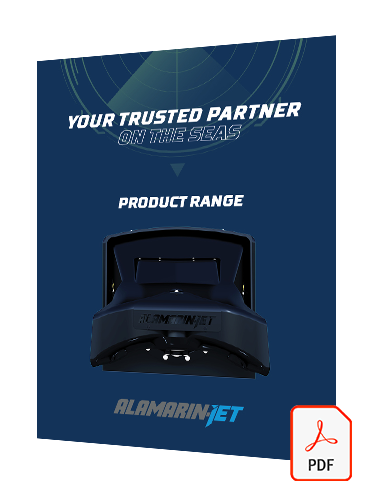Frequently asked questions
The change in the flow rate creates a reactive force in the direction of the flow, which thrusts the boat forward.
A conical impeller housing refers to the section of the jet which surrounds the impeller, the conical design allows the impeller to move backward and forward inside the tunnel to adjust the gap between blade tip and tunnel wall and also contributes to the pumps mixed flow characteristics.
When beaching often and operating in waters with a lot of sand and silt the resulting wear can cause the gap between impeller blade tip and housing to increase, this has a negative effect on performance and due to the straight impeller housing of other jets it means a ‘wear ring’ must be replaced or impellers must be replaced.
A simple adjustment is required with Alamarin-Jets with no requirement for special tools.
Please contact sales@alamarin-jet.com and fill in the Application Questionnaire and we will recommend you suitable solution with speed estimation for your needs.
Though fouling can damage a jet (particularly fishing line), all open propeller propulsion types can also be fouled by rope, fishing line, rocks, and logs. Therefore, waterjets are actually more protected against fouling since they have an intake grill that blocks ingress of larger flotsam; something conventional propellers lack.
Furthermore, removal of foreign objects can actually be easier with waterjets as most feature either an inboard or outboard inspection hatch to access inside the jet without have to enter the water or lift the vessel. Alamarin-Jet have paid particular attention to the designing much larger inspection hatches than comparable products to allow increased ease of use.
